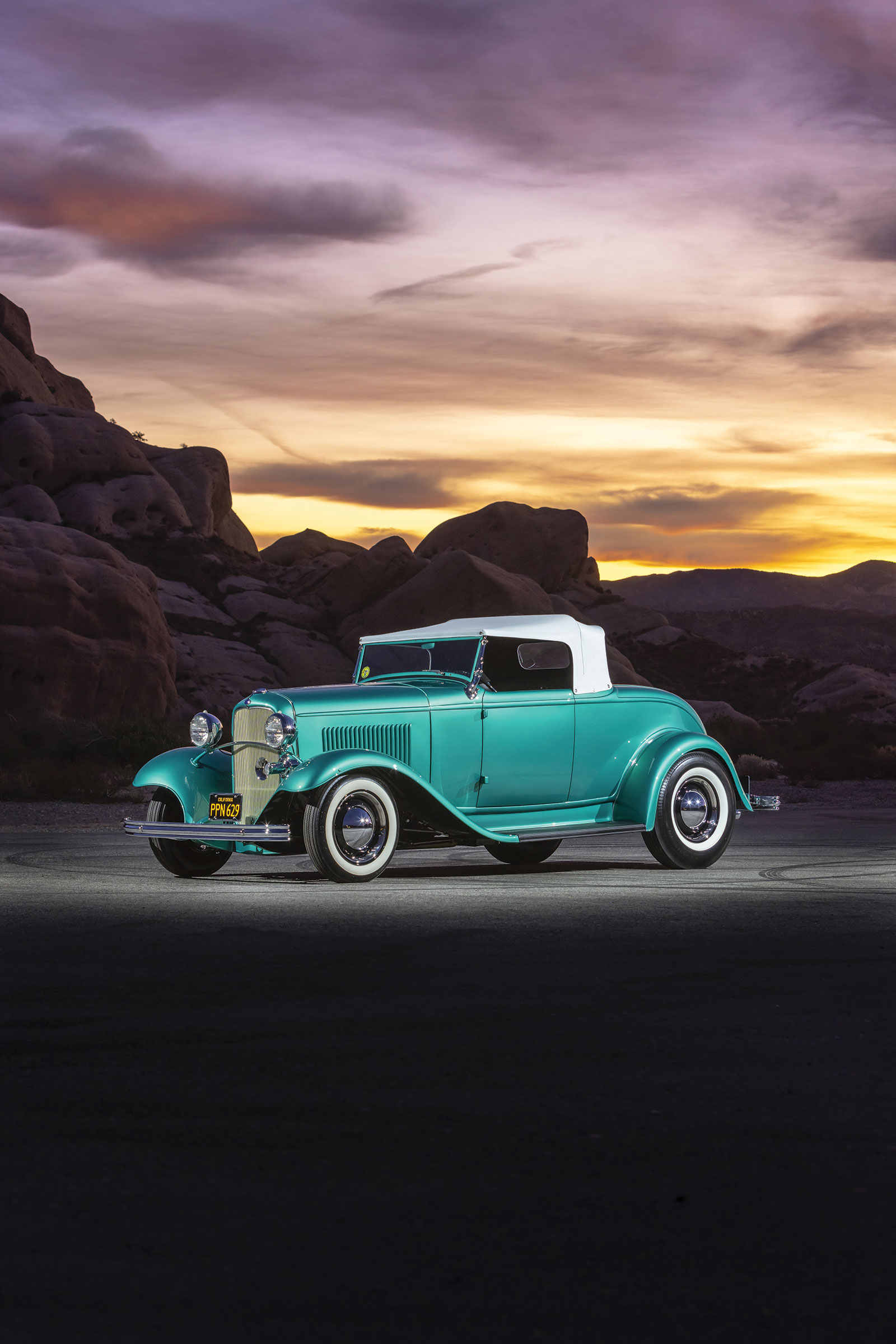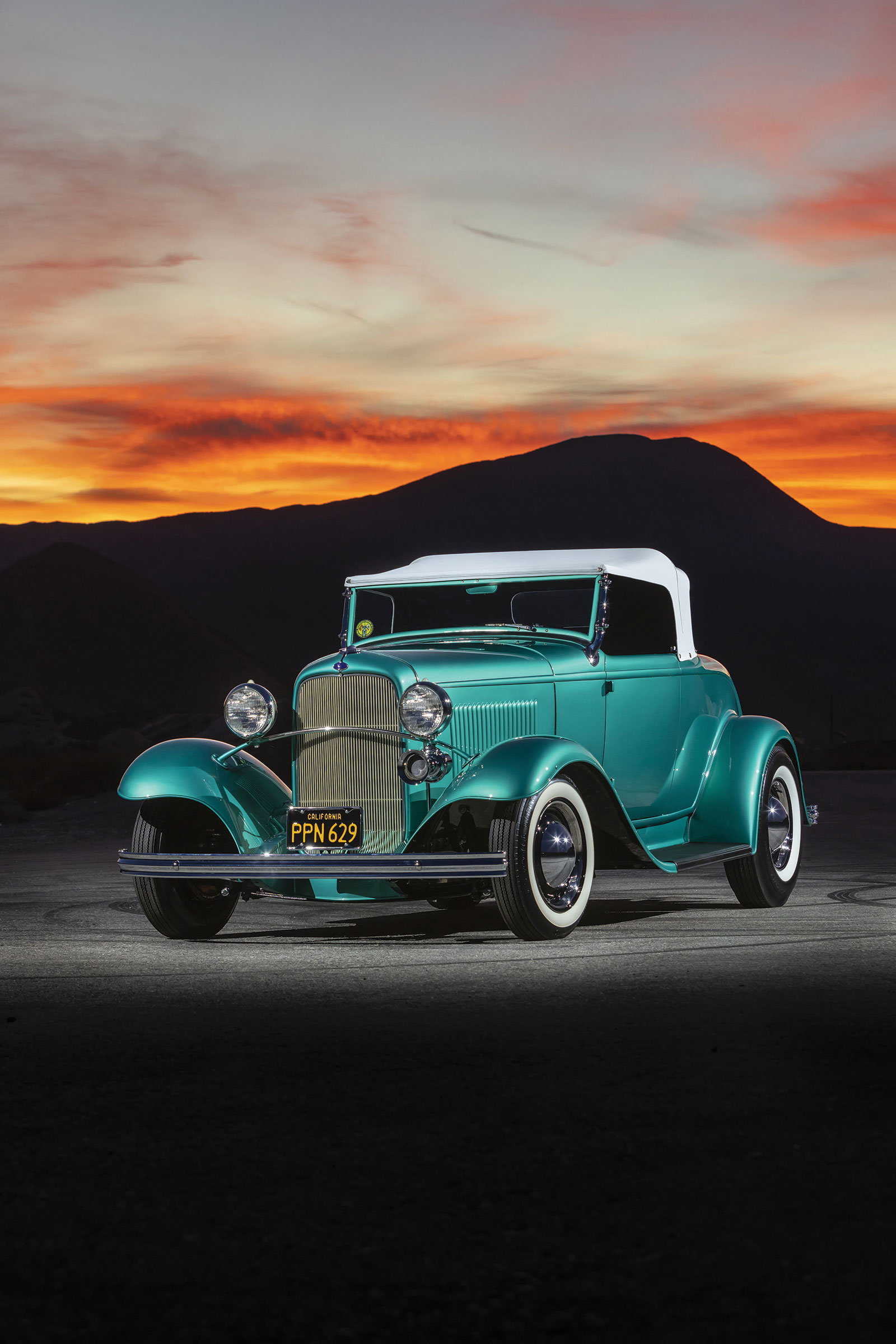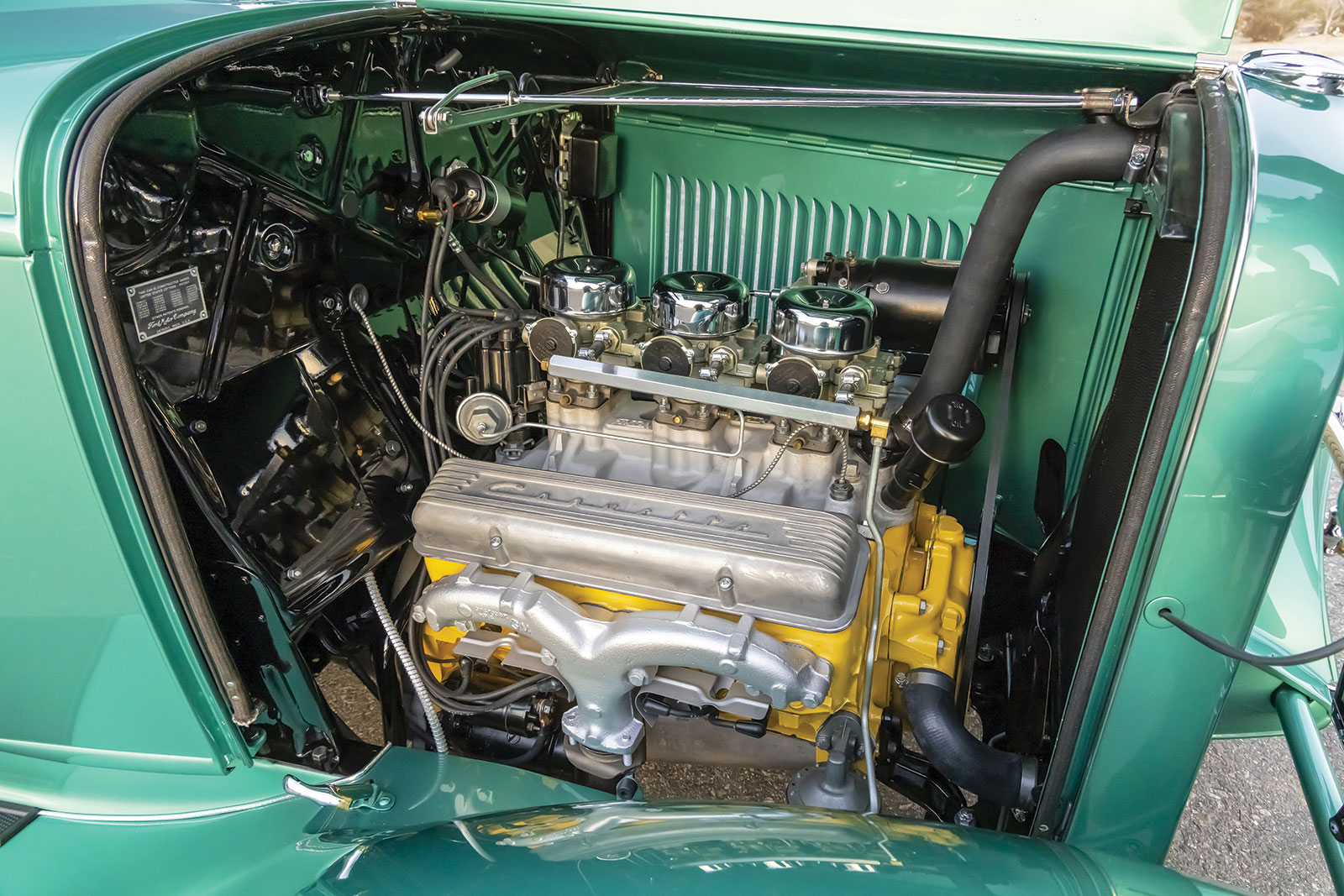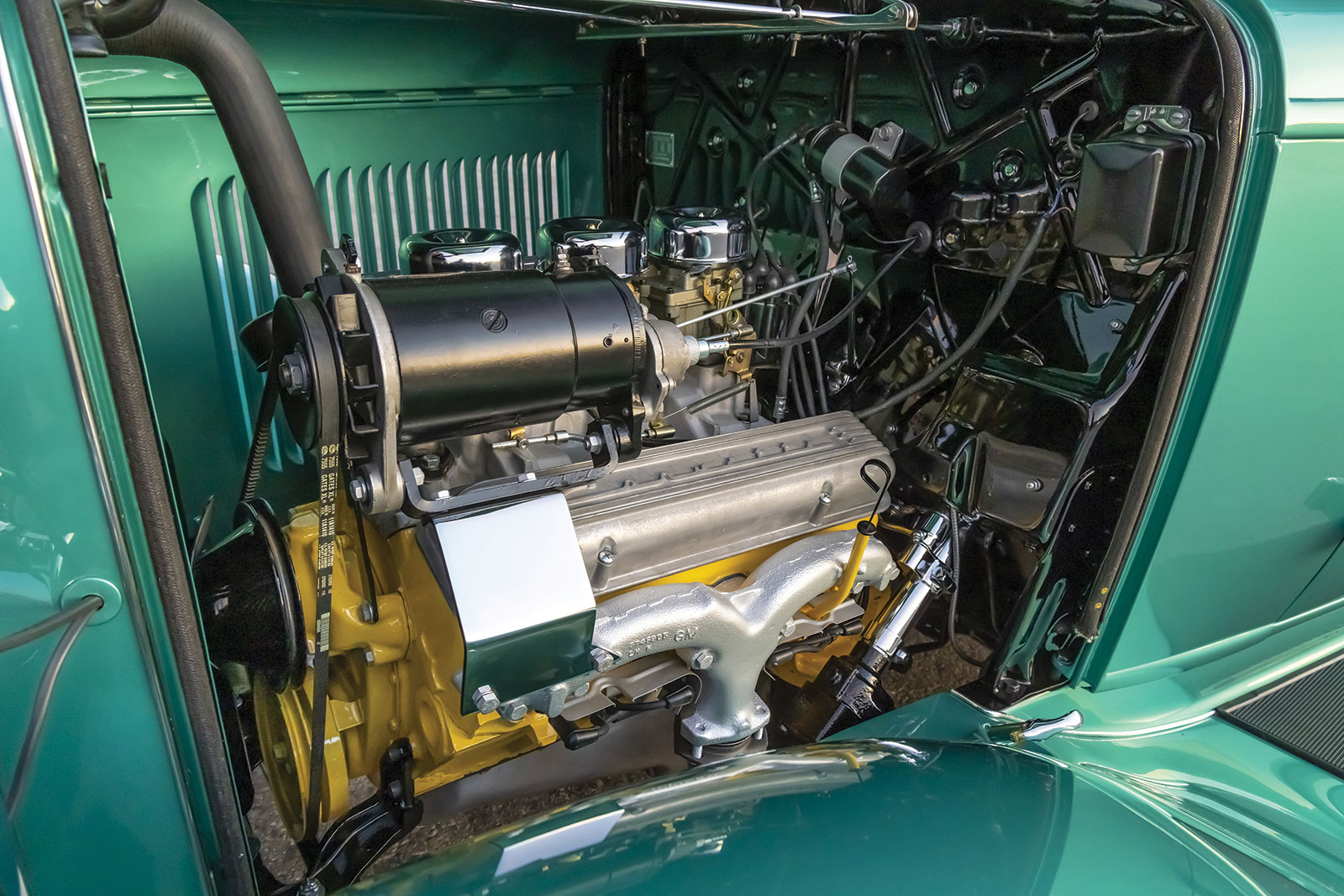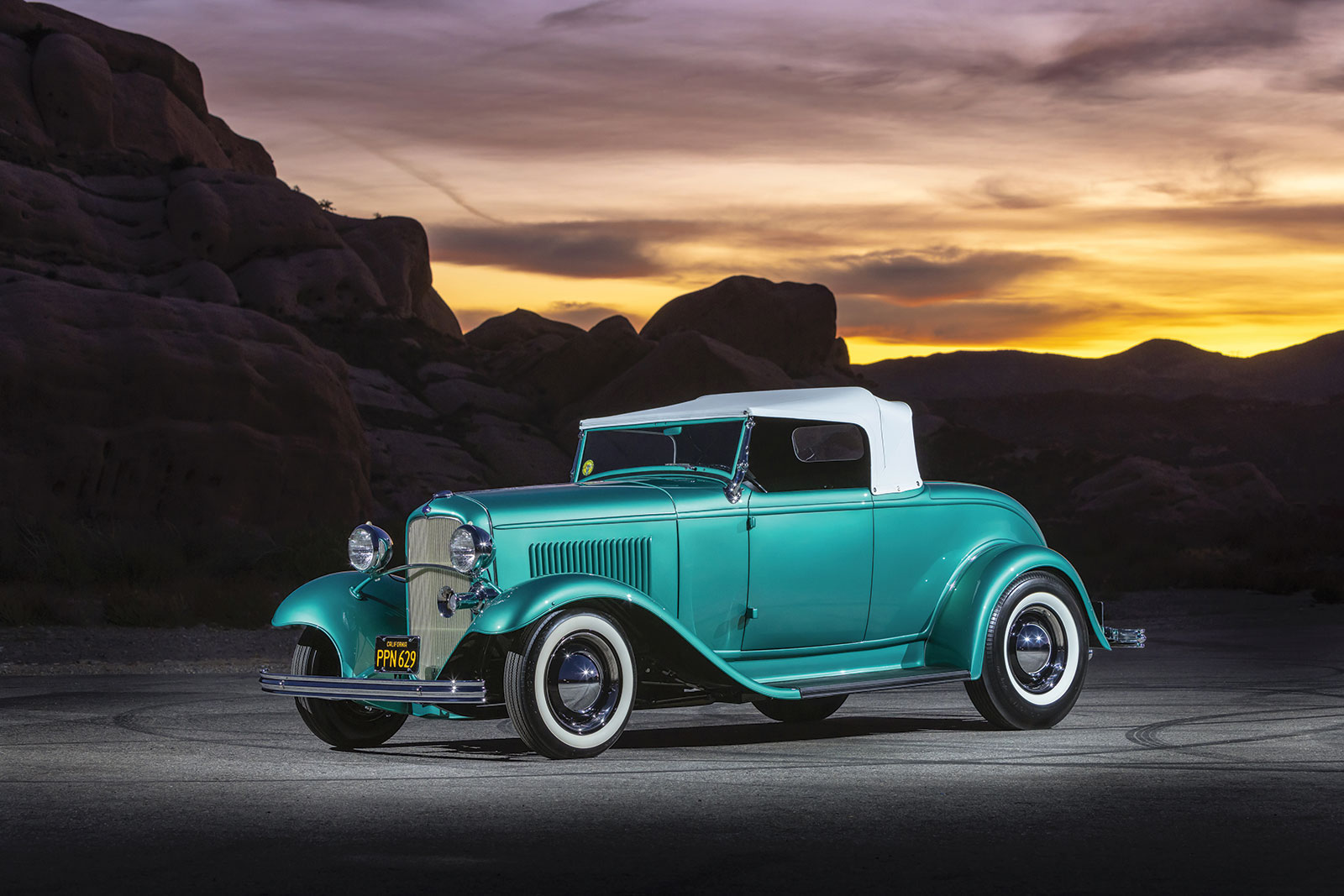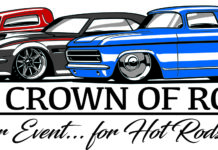Bob Owens’ Painstaking Deuce Coupe Roadster Resurrection Earns The Concours d’Elegance At Pebble Beach
Wrecker’s Finest Haul – Bringing Back a 1932 Ford Roadster to its Previous Glory
By Chris Shelton – Photography By Wes Allison
Pebble Beach Concours d’Elegance winner probably isn’t the best way to introduce anybody in a rod magazine. But our pal Bob Owens isn’t just any ol’ body, either. Hell, sometimes he ain’t even Bob. More on his 1932 Ford roadster.
“Flattop,” as his friends know him, owns a Deuce that placed Third in the Historic Hot Rods class at last year’s event. Now, if the irony in that isn’t obvious, we’ll point it out: Concours typically isn’t the place for owners with working-class nicknames. But Flattop is, in fact, an heir: He presides over Owens Salvage Company, his family’s ancestral wrecking yard in the rolling hills east of Amarillo, Texas.
If you’re historically minded, you likely recognize the car from its spate of publicity it got in the early ’60s. Rod & Custom tested Ian Cusey’s jade-green Deuce in the July ’62 issue. Then it appeared on the cover of Hot Rod magazine’s 1963 special Speed Tuning & Trouble Shooting.
Read More: Sacramento Autorama 2023 Custom d’Elegance Winner
It was a copy of that special that someone gave to Flattop’s friend, Randy Pimpler. A brief Internet search dug up Ian Cusey’s phone number. A slightly longer phone call blew Pimpler’s mind: Cusey not only owned the car half a century later, but he’d sell it. So, Pimpler bought it.
The elements were remarkably good to the car; it went into dry storage soon after its debut. But what wasn’t so great were the times.
Cusey had a longstanding friendship with publisher Tom McMullen. Among other things, they were in L.A. Roadsters together (Cusey was VP when his car got ink). It explains how his Ford roadster appeared with McMullen’s on the cover of the Astronauts’ 1963 release Competition Coupe (but doesn’t explain why the producers chose Ford roadsters for the album art).
They hatched a plan to update the roadster as a stripped-down highboy with modern amenities, like a RFID ignition switch (a McMullen favorite). Starting in the Mar.’82 Street Rodder, they shaved the body, replaced its floors, and replaced the Ford suspension with California Street Rods four-links front and rear. They replaced the 283 and ’47 gearbox with a 350 engine & automatic transmission combo. Then, in prime Tom McMullen fashion, McMullen hurt himself in a crash. The car sat until Pimpler bought it.
Flattop secretly longed for the car in his pal’s garage. “I never tried to buy it, but he knew I liked it,” he says. “Well one night, outta nowhere, he calls me. ‘You wanna buy the car?’”
He sold his ’51 Mercury. “That was a primo car, an awesome Merc, and we traded it for a rusty Ford in boxes,” he says, chortling. He spent the following replacing what was lost to its partial transformation.
Then he did something uncharacteristic: He asked for help. “I’ve always worked on my own cars,” he boasts. “This is the first time that I let anybody else fix a car for me.”
Like Flattop, Jamie Johnson ain’t just any ol’ body. He runs Jamie Johnson’s Hot Rod Haven, an industrious little shop in Albuquerque, New Mexico.
“You know how a car will go to a shop and just sit there?” Flattop asks. “And you’ll come back year after year and here sits the same four or five cars? What I like about Jamie, it’s him and his dad and one other guy and they work on one car at a time.”
Read More: Donn Lowe’s 1929 Ford Model A Roadster
“About every eight months we finish a car for somebody, and I’d say for the last five or six years they’ve all been ’32 Fords,” Johnson says. They bag and tag every part and then send them out for blasting. And that’s when everybody realized just how much work they were in for. “When it was turning it into an ’80s-style car, they brazed up the holes for things like the side curtain and fenders,” he says. Johnson removed all the brass and grafted about 50 patches of new skin to the body. “It was a bit of a mess.
“In Street Rodder back then, there’s a picture of a new floor going in,” he continues. “Well, they did it with the body upside down. The floor was an inch out of square. The decklid wouldn’t even fit in the hole.” He removed the floor, squared up the body again, and replaced the floor. “Of course, it was all brazed in. But we were lucky enough that Bob had almost everything in boxes,” he says. “The car had everything that was specific to it. You know, all the things that made it different.” Even the 283 that Frank Brown rebuilt for Flattop was ready to go.
Jamie, his dad, Jim, and family friend Al Edwards painstakingly restored, reassembled, and realigned the entire car working from scans of negatives from the R&C article. The only thing they didn’t do was spray primer and paint (that was Sean Sena and the color is ’57 Plymouth Jade Green Poly), plate parts (Beo-Mag Plating, Santa Ana, California), or do the trim work (Baskin Auto Upholstery in Fresno, California, and Ron Mangus in Yucaipa, California).
And Flattop sweated every detail. “There are nine reproduction parts on that whole car,” he says, practically crowing. For the record, it’s trim rings, brake drums, and a gas cap. “And when I go to the Grand National Roadster Show (2023), Early Ford in San Dimas, California, has a cap for me.”
The car debuted at the 2022 Grand National Roadster Show. “The car was everywhere on the Internet during the roaster show,” Flattop says. “I guess that’s where Ken Gross saw it.”
Gross is a whole bunch of incredible things, but his status as a class judge at Pebble Beach Concours D’Elegance is what matters most here. He nominated the car for judging in the 90th anniversary celebration of the Deuce roadster that the organizers hosted.
“You know, I just knew (Pebble) was the most prestigious car show and I didn’t know how it worked or anything like that,” Flattop admits. “I figured they don’t really like us (hot-rod people). But everybody was very nice to me,” he continues. “I didn’t have any trouble at all. And I enjoyed it so much. You know, I grew up going to hot rod shows. So, to see Marmon’s and Talbot-Lagos? You know, stuff that I don’t get to see?
Read More: 1932 Ford Highboy Coupe With 50s Vibe
“And I’m a trinket guy. I love gauges and knobs. How many ’40 Fords have you walked by in your life? Hundreds. How many Duesenbergs do you get to look at up close? I enjoyed looking at the knickknacks.
“I was so surprised when all this happened, five couples of my friends all paid and went to Pebble Beach just, you know, to support me.” They all shared a home near Laguna Seca. “When we’d go back to our room, I could hear the cars running.”
The storybook ending came when officials told Bob to drive his car up to the awards apron. “When they picked the car, I just kind of stood there,” Johnson says. “This is unbelievable.
“We showed up with no political pull,” he continues. “The owner being Bob and the builder being me, it was just crazy.”
Flattop calls it all a windfall of good fortune. “If they would’ve not touched that car, if I could have got it the way it was parked in the early ’70s, it would be like Gray’s (Baskerville) car. It could have been saved as-is.

“But them doing what they did lowered the price,” he says. “Which allowed [Pimpler] to get it, which allowed me to get it.”

He calls it luck, but I like to think of Flattop’s good fortune as a reward. His family spent almost three generations—his whole life thus far—in the pursuit of keeping our old junk on the road. And it took someone like the heir to a wrecking yard to painstakingly track down every part, suss out every detail, and agonize over every discrepancy (seriously, call Owens Salvage Company if you have good drums or New Old Stock. trim rings). Whatever it is, I bet you agree that he deserves it.

Pebble Beach winner may not be the best way to introduce somebody in a hot rod magazine. But honestly, I can’t think of a better way to describe Flattop Bob Owens. MR














